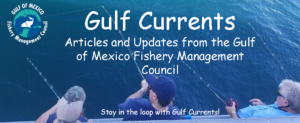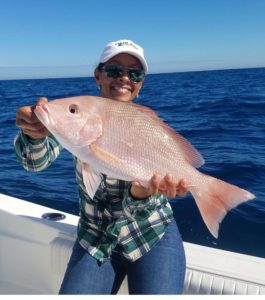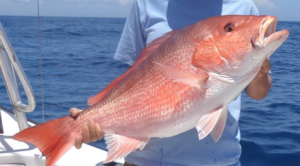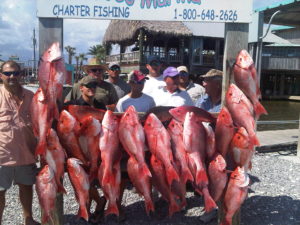
The Gulf of Mexico Fishery Management Council will meet by webinar April 12-15, 2021. The Committee and Council Agendas, and meeting materials are available on the Council Meeting Webpage. You will be able to join the webinar at this link during the meeting. 
Public testimony will be held on Wednesday, April 14, 2021 from 2:00 – 5:30 PM EDT. Details on how to successfully join the meeting and provide testimony can be found here.
Additionally, the Gulf Council and NOAA Fisheries will host a question and answer session with the public from 5:30 – 6:30 PM EDT on Tuesday, April 13, 2021. If you want to speak to ask a question, you must join the webinar online. Alternatively, during the meeting, you can email questions to [email protected] or text them to (813) 317-6220 and a staff member will ask on your behalf. To listen in by phone, call: 1-(415) 655-0052 / Audio Access Code: 989-129-913
The Council meeting will begin with a closed session to make preliminary selections for membership on the Reef Fish and Shrimp Advisory Panels. Appointees will undergo a fisheries violation background check prior to being appointed at the June Council Meeting. During closed session, the Council will also select the 2020 Officer of the Year or Team of the Year award.
The Council scheduled to take final on two items at this meeting. Both items focus on red snapper and could impact red snapper fishing this year as described below:
Red Snapper Catch Limits and Scientific and Statistical Committee Review of Red Snapper Catch Analysis
The Council’s Scientific and Statistical Committee (Committee) recently recommended increasing the red snapper acceptable biological catch limit by 300,000 pounds. This recommendation comes after the Committee and three independent
 reviewers performed the first peer review of the Great Red Snapper Count. While the results of the study were used to raise the red snapper overfishing limit, uncertainty in the study methods and results did not allow for a substantial increase to the acceptable biological catch at this time. Instead, the Committee decided to use data from an interim analysis of the red snapper stock which used the NMFS bottom longline survey, with data from 2002-2019 to set its acceptable biological catch recommendation. We anticipate that once the Great Red Snapper Count study and its results are updated based on the peer review, it will be incorporated into the next red snapper stock assessment. For now, the Council will consider increasing the red snapper catch limits to align them with the newly recommended acceptable biological catch.
reviewers performed the first peer review of the Great Red Snapper Count. While the results of the study were used to raise the red snapper overfishing limit, uncertainty in the study methods and results did not allow for a substantial increase to the acceptable biological catch at this time. Instead, the Committee decided to use data from an interim analysis of the red snapper stock which used the NMFS bottom longline survey, with data from 2002-2019 to set its acceptable biological catch recommendation. We anticipate that once the Great Red Snapper Count study and its results are updated based on the peer review, it will be incorporated into the next red snapper stock assessment. For now, the Council will consider increasing the red snapper catch limits to align them with the newly recommended acceptable biological catch.
Red Snapper Recreational Data Calibration and Recreational Catch Limits
NOAA Fisheries has been using the federal

Marine Recreational Information Program (MRIP) in concert with landings and effort data collected from Gulf state data collection programs to monitor private recreational red snapper seasons. Some estimates generated by the state data collection programs differ from MRIP estimates that were used to generate the current annual catch limits. Adjustments to the state-specific recreational annual catch limits are being considered to account for the harvest monitoring programs used by each state and to reduce the likelihood of exceeding the red snapper private angling component annual catch limit.
